
Space Race Time Line
After the fall of Nazi Germany at the end of World War II, the
United States and the Soviet Union emerged as superpowers,
each striving for primacy on a global scale. As rocket
technology improved and spaceflight seemed possible, the
dueling forces also set their sights on reaching and
controlling space. Headlines of the 1950s and '60s seemed to
indicate that the Soviet Union was light-years ahead of the
U.S. throughout much of the space race. But behind the scenes,
a very different story was unfolding. Recently released
documents reveal secret military plans, cover-ups, and covert
spy missions that were part of humankind's ambitious journey
into orbit and beyond. In this time line, explore the Cold
War's secret space race.—Rima Chaddha
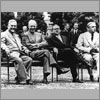

Left to right: Soviet Premier Nikolai Bulganin, U.S.
President Dwight Eisenhower, French Premier Edgar Faure,
and British Prime Minister Sir Anthony Eden on the eve
of the 1955 Geneva conference during which Eisenhower
introduced "Open Skies"
|
|
July 1955
Open Skies proposed
Following World War II, the United States and the Soviet
Union entered into the Cold War game of spy-versus-spy
that ultimately led to the space race. Americans were
still deeply unsettled by the 1941 attack on Pearl
Harbor, and the U.S. government wanted to arrange
flyovers of U.S.S.R. territory to learn what they could
about Soviet arms. Equally, the Soviets wanted to spy on
the United States but strived to keep their depleted
military resources secret. In July 1955, President
Dwight Eisenhower proposed an "Open Skies" policy
whereby either nation would be allowed to fly
reconnaissance aircraft over the other. When the Soviet
Union rejected the proposal, Eisenhower sought other
ways to gather intelligence. On July 29, he announced
that the United States would begin work on a scientific
satellite. The Soviet Union immediately announced that
it too would launch a satellite.
|
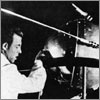

A technician puts the finishing touches on Sputnik 1
shortly before the satellite's three-week orbit.
|
|
October 1957
Sputnik 1
In a top-secret report, Eisenhower's Science Advisory
Committee urged him to consider launching non-military
satellites, which, unlike planes, could travel over
enemy terrain without risk of being shot down. These
satellites would thus establish a precedent for "freedom
of space," conducting flyovers above the planet's
atmosphere without permission or negative consequences.
While to the public the satellite program was a purely
scientific effort, both Eisenhower and the Soviet
leadership understood the potential for reconnaissance:
Safe from attack, an orbiting satellite could
theoretically observe anything on the ground. Both
nations endeavored to perfect their satellites and
launch first, and on October 4, 1957, the Soviet Union
sent Sputnik 1 into orbit.
|
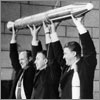

Three men responsible for the Explorer 1 raise a model
of the satellite at a 1958 press conference. (Left to
right: William Pickering, James Van Allen, and Wernher
von Braun)
|
|
January 1958
Explorer 1
Just a month after propelling the first satellite into
space, the Soviet Union had made headlines again with
Sputnik 2, which sent the first animal, a dog, into
orbit. With two failed launch attempts in the United
States, many Americans wrongly believed Eisenhower had
failed to recognize the importance of space efforts. But
on January 31, 1958, America began to catch up publicly
to the Soviet Union. The U.S. satellite aptly named
Explorer 1 not only reached orbit but also managed to
gather useful scientific data. In July, Eisenhower
announced the formation of NASA, a federal agency that
would be devoted to exploring space. Meanwhile, students
nationwide benefited from new programs adopted to
improve science and math education.
|
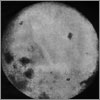

Luna 3 snapped 29 images in total, capturing the first
shots ever of the far side of the moon.
|
|
1959
Reaching for the moon
By 1959, both countries had set their sights on a new
symbolic goal—being first to the moon. The Soviets
launched Luna 1 in January, and although the craft
missed its target, it became the first to fly beyond
Earth's orbit and the first to orbit the sun. In March,
the United States launched Pioneer 4 toward the moon,
but it too missed and fell into solar orbit. Finally,
Luna 2 reached the moon's surface, and on October 4,
exactly two years after Sputnik, Luna 3 performed a
flyby and photographed most of the moon's far side. The
Soviets now appeared to be winning the lunar phase of
the space race, but if they intended to send a manned
mission to the moon, they were keeping the plans secret.
|
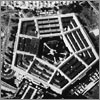

This 1967 Corona photograph, a test of the satellite's
spying capability, offers a detailed view of the
Pentagon in Washington, D.C.
|
|
1960
Spy photos from space
As scientists in both nations worked to improve rocket
and satellite technology, plans for spy missions were
already well under way. Since 1959, the United States
had been developing a series of secret military
reconnaissance satellites together codenamed Corona. But
because rocket launches were difficult to hide, the U.S.
government disguised early Corona missions as part of a
publicly known research program called Discoverer. The
Soviet Union lagged two years behind with their own
Zenit spy satellites, which were ostensibly part of the
Kosmos research program. The Zenits carried standard
film cameras similar to those found in rival Coronas
and, over time, they became powerful enough to
photograph objects as small as passenger cars on the
ground.
|
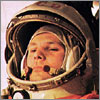

Dressed in space gear, Yuri Gagarin rides a bus to the
Vostok 1 launch site.
|
|
April 1961
Gagarin reaches space
On April 12, 1961, cosmonaut Yuri Gagarin flew into
orbit with the Vostok 1 and became the first man in
space. The Soviets had once again beaten the Americans
by mere weeks. Yet Gagarin's flight, a driving impetus
behind President John F. Kennedy's May announcement that
American astronauts would reach the moon by the end of
the decade, was not as flawless as the Soviets claimed.
Nearing the end of its orbit, Gagarin's craft began
spinning out of control. During the ensuing 10-minute
panic, his commander, who was on the ground, scribbled
in his notes phrases like "sudden impact," "emergency
situation," and "Malfunction!!!" Gagarin himself would
later confirm the near-accident, which remained hidden
to the world for decades.
|
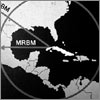

This CIA map revealed the potential reach of
medium-range and intermediate-range ballistic missiles
if launched from Cuba.
|
|
October 1962
Cuban Missile Crisis
Tensions rose dramatically in October 1962, two months
after the first Zenit photographs reached Earth, when an
American reconnaissance aircraft flying over Cuba
photographed Soviet nuclear missile sites under
construction just 90 miles from the U.S. coast. The
Americans had built similar bases at the Turkish-Soviet
border, and if one nation chose to strike, the other
could easily retaliate. The Cuban Missile Crisis lasted
only two weeks but had significant consequences.
Realizing the potential for a nuclear war, both nations
removed their weapons and secretly sought ways to
further improve their intelligence-gathering
capabilities.
|
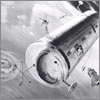

A 1960 conceptual drawing of the Manned Orbiting
Laboratory
|
|
1963
Manned Orbiting Laboratory
On December 10, 1963, the United States announced plans
to build the Manned Orbiting Laboratory, a military
space station designated for scientific research. The
MOL's covert mission, however, was to enable astronaut
spies to take better and more detailed photographs of
the Soviet Union and its allies than ever before. The
Corona satellites in use in the early 1960s were not
sophisticated enough to seek out and zoom in on
specified targets. But as computerized reconnaissance
technology improved, the need for an expensive manned
mission receded. The United States finally abandoned the
MOL program in June 1969, one month before NASA's Apollo
11 landed the first men on the moon.
|
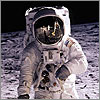

A reflection of the lunar module can be seen in Buzz
Aldrin's visor as he stands on the moon. (Inset: a
Krechet spacesuit)
|
|
1969
Moon rockets
To many, the space race ended when Neil Armstrong and
Edwin "Buzz" Aldrin set foot on the moon. This time, the
Soviets were far behind. While the world marveled at the
United States' Saturn 5 "moon rocket," which sent the
astronauts' Apollo 11 craft into space, the Soviets had
secretly been working on their own version, the N-1.
Although the N-1 failed to launch, the rocket engineer
who led the program, Vasily Mishin, kept private diaries
listing items and operations needed for a manned lunar
landing. These included specialized tools, maps, and
spacesuits. The Soviets had even built a prototype moon
suit, called the Krechet ("Golden Falcon").
|
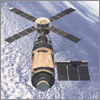

Three crews boarded Skylab between 1973 and 1974, with
the longest mission lasting nearly three months.
|
|
1973
Skylab
By 1973, the MOL was little more than a memory to the
few Americans who knew about it. But as the potential to
sustain human life in space increased, so did the desire
to develop a manned space station. A special advisory
group to President Richard Nixon offered suggestions for
such a station, which was to be occupied permanently, as
part of a post-moon-landing plan for American space
travel. Using some remaining hardware from the
soon-to-be-cancelled Apollo program, NASA developed
Skylab, which launched in May. Skylab remained in orbit
for six years, and experiments conducted aboard the
craft obtained vast amounts of scientific data and
demonstrated that humans could live and work
productively in space for months at a time.
|
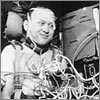

Cosmonauts test a pressure suit worn aboard a Salyut
space station orbiting Earth.
|
|
1974
Space weapons
Illustrating the Cold War's true potential dangers, both
the United States and the Soviet Union made covert plans
to bring weapons ranging from cannons to laser guns into
space. In 1974, the Soviet Union launched the Salyut 3
space station, code-named Almaz, which secretly carried
a 23-mm Nudelmann aircraft cannon. According to Soviet
cosmonauts, tests run on this very first space gun were
a success—the cannon even destroyed a target
satellite. Although Almaz tracked several American
spacecraft, including Skylab, the Soviets never attacked
any of them. More benign Soviet stations such as the
Salyut 4 were utilized in research and tests similar to
those conducted on Skylab.
|
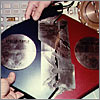

The Apollo-Soyuz plaque, engraved in both English and
Russian, was created to commemorate this first joint
effort.
|
|
July 1975
Apollo-Soyuz
Marking a temporary thaw in the Cold War, the United
States and the Soviet Union embarked on their first
joint space venture in July 1975. Astronauts and
cosmonauts docked the last Apollo spacecraft with the
Soviet vessel Soyuz, and the crews visited each other's
craft and shared meals. At ground control centers in
Moscow and Houston, scientists cooperated in tracking
data and communications. Although tensions between the
two nations remained—the 1980s saw President
Ronald Reagan's "Star Wars" plans to intercept Soviet
missiles from space, for instance—Apollo-Soyuz set
the stage for later collaborative space efforts,
including the International Space Station. This research
facility, currently being assembled in orbit, will be
open to cosmonauts and astronauts worldwide.

|
|


We recommend you visit the
interactive version. The text to the left is provided for printing purposes.
|














